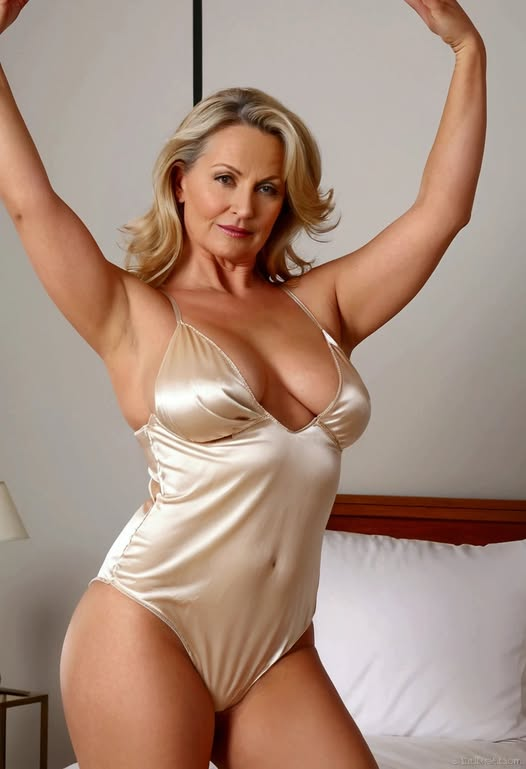
A woman who stretches just a little too long isn’t sore—she’s showing you what she still has. That deliberate arch of the back, the slow reach toward the ceiling, the linger in the pose long after any real stiffness would ease—these aren’t signs of physical discomfort. They’re a quiet declaration, a demonstration of vitality that defies expectations, especially for those who’ve lived long enough to know how easily others might underestimate them.
Think of the morning coffee ritual at the community center. Mrs. Higgins, 78 with silver braids and a mischievous glint, will stand by the counter, arms rising in a yawn that turns into a full-body stretch. She’ll hold it, fingers splayed, spine lengthening, while the younger volunteers fetch creamers. We used to laugh and say, “Tough night, Mrs. H?” But now we see the truth: she’s not working out kinks. She’s letting them notice—the strength in her shoulders, the flexibility in her spine, the way her eyes still sparkle with life as she lowers her arms. It’s a “look at me” wrapped in a “just stretching.”
At family barbecues, it’s the aunt who bends to pick up a napkin and turns it into a slow stretch, one leg extending behind her, hand brushing the grass. The teenagers snicker, but the older folks smile knowingly. She’s not overdoing it to be silly. She’s reminding everyone that age hasn’t turned her into a statue—that she still moves with purpose, with a quiet pride in the body that’s carried her through marriages, children, and decades of joy and struggle. It’s a gentle rebuke to anyone who might think “grandma” means “fragile.”
That extra second in the stretch is key. It’s the pause that turns a reflex into a statement. In yoga classes, you’ll see it—the woman who holds the downward dog a breath longer than the instructor cues, her form steady, her gaze calm. She’s not ignoring the timer; she’s letting the room absorb the fact that she’s here, present, capable. Younger students might rush to the next pose, but she knows the power of staying put—of making her presence felt in the stillness.
This isn’t about vanity. It’s about ownership. A lifetime of being told women “peak” at a certain age, of having their bodies discussed as if they’re fading objects, teaches a quiet defiance. The stretch becomes a way to say, “This body is mine, and it still serves me. It bends, it reaches, it endures—and I’m not afraid to let you see that.”
There’s warmth in it, too. The woman who stretches a little longer isn’t showing off. She’s inviting you to celebrate with her—to recognize the beauty in persistence, in a body that’s been loved and used and still keeps going. It’s a shared joy, a “look what we all get to keep, if we’re lucky” that transcends age.
So the next time you see a woman linger in a stretch, don’t assume she’s sore. Take a moment to appreciate the story she’s telling—one of resilience, of pride, of a life still being lived fully. She’s not just moving her muscles. She’s showing you, in the most natural way possible, all that she still has to give.